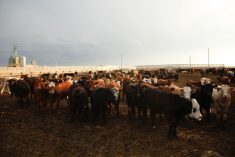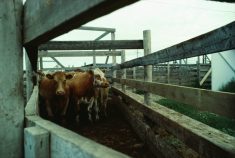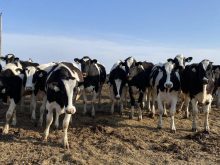The House of Commons’ standing committee on agriculture will soon be wrapping up its study into Canada’s processing capacity.
Since November, MPs have heard from more than 50 witnesses on the matter — including representatives from the Canadian Cattlemen’s Association, whose president Bob Lowe and executive vice-president Dennis Laycraft testified at a committee meeting Tuesday.
In the CCA’s accompanying brief, seven recommendations on how to “create an environment that will support an optimal Canadian packing system” were provided:
- Establish a Red Meat Industry Export Development Fund;
- Support North American integration by harmonizing Canadian and U.S. shipping requirements for beef to South Korea;
- Extend livestock set-aside program availability into 2021-22;
- Update Canada’s specified risk material (SRM) removal requirements;
- Implement the recommendations of the Labour Workforce Action Plan;
- Support automation in processing plants, and
- Place vaccination priority on agri-food processing workers.
Read Also

U.S. livestock: Cattle strength continues
Cattle futures on the Chicago Mercantile Exchange were stronger on Friday, hitting fresh highs to end the week.
The CCA made clear to MPs that about 77-79 per cent of Canada’s total beef processing has taken place in Western Canada, averaging 56,249 head per week, with an 86 per cent utilization rate over the last five years.
COVID-19 seriously screwed that up: last spring, “temporary slowdowns effectively halted just over two-thirds (70 per cent) of Canadian beef processing capacity over a two-week period and resulted in the first half of 2020’s cattle slaughter being down 11 per cent compared to the same period in 2019.”
A since-processed backlog out west of about 130,000 head ensued, creating millions in feedlot losses.
The CCA contends Eastern Canada’s federally inspected packing capacity flirted with full capacity even prior to the pandemic. Figures provided show utilization rates at eastern packing facilities being above 90 per cent since 2017, and rising each year.
(In 2020, weekly slaughter capacity was 12,550 and the use of it was 100 per cent. The year prior, capacity for 13,250 was used at 98 per cent.)
“This resulted in longer feeding periods, increased costs and lower prices for producers,” read the submission. “This capacity shortage has been particularly acute during the fall and winter months where producers are experiencing delivery and processing delays and a negative price spread to other regions.”
The submission notes that while Ontario’s packing capacity was “keeping pace” during the pandemic, a December 2020 closure at Cargill’s Guelph facility resulted in an estimated backlog of 10,000-15,000 head of cattle during the two-week period.
A set-aside program put in place by the federal government during the pandemic helped bring “stability to the market” but a backlog of 10,000-15,000 head of cattle remains, according to the CCA.
Across Canada in 2020, Canadian federally inspected slaughter capacity averaged 57,681 head per week with a utilization rate of 89 per cent.
But packing capacity taking place in Canada is becoming more and more concentrated in large facilities. Those big packers are highly efficient competitors that proved capable of enduring the pandemic, the CCA said.
Small- and medium-sized packers in the past 10 years have had difficulty competing, and the CCA contends that’s because of efficiencies of scale and regulatory burden.
“Creating the right conditions for small, medium and large packers is essential to a resilient Canadian beef sector,” the group said. “Additionally, the integration and thinning of the U.S. border for live cattle and meat trade will further build resiliency within the Canadian beef supply chain.”
Testimony on the matter at ag committee meetings last week also came from representatives for Maple Leaf Foods, Novalait, Canards du Lac Brome and Fraser Valley Specialty Poultry.
— D.C. Fraser reports for Glacier FarmMedia from Ottawa.















